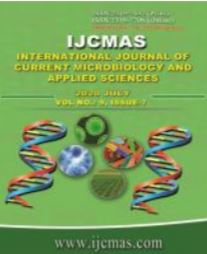


 National Academy of Agricultural Sciences (NAAS)
National Academy of Agricultural Sciences (NAAS)

|
PRINT ISSN : 2319-7692
Online ISSN : 2319-7706 Issues : 12 per year Publisher : Excellent Publishers Email : editorijcmas@gmail.com / submit@ijcmas.com Editor-in-chief: Dr.M.Prakash Index Copernicus ICV 2018: 95.39 NAAS RATING 2020: 5.38 |
Sesame (Sesamum indicum L.) is a well-known oilseed crop that belongs to Pedaliaceae family. It is cultivated in almost all parts of the country during different seasons of the year. Seed grading is nothing but elimination of injured, diseased, under-sized or otherwise defective seeds to have a homogenous seed lot. The present study was carried out to find out the optimum sieve size for size grading of sesame (Sesamum indicum L.) var. TMV-7. The seeds were graded using BSS 10×10, BSS12×12 and BSS14×14 wire mesh sieves and evaluated for quality parameters along with control (ungraded). The sesame seeds graded with BSS12×12 wire mesh sieve shows significantly higher seed recovery (77%), germination (94%), 1000 seed weight (2.844g), root length (10.2cm), shoot length (6.3cm), dry matter production (0.0212g/10 seedlings), vigour index-I (1551)and vigour index-II (2.01). Although seeds graded with BSS 10×10 has quality seeds but the seed recovery percentage was very low. Hence, seeds of sesame (Sesamum indicum L.) var. TMV-7 could be size graded using BSS12×12 sieve for more seed recovery with required seed quality standards as compared to BSS 10×10, BSS14×14 and control (ungraded).
 |
 |
 |
 |
 |